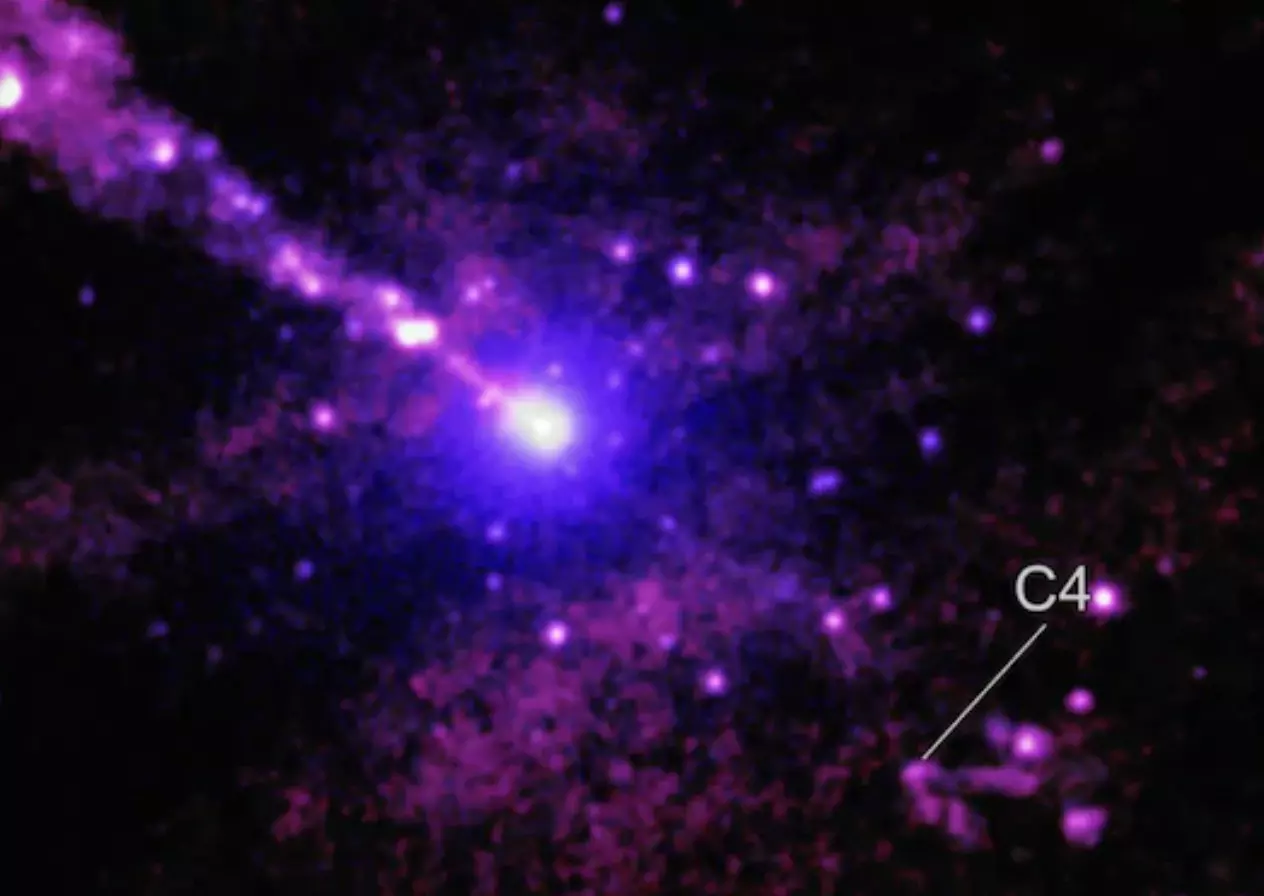Astronomers uncover mysterious collision with supermassive black hole jet in distant galaxy: Original footage
Astronomers uncover mysterious collision with supermassive black hole jet in distant galaxy: Original footage

Astronomers have made an intriguing discovery of a unique collision between a supermassive black hole jet and an unidentified object in the Centaurus A galaxy, 12 million light-years away. This finding, revealed through NASA’s Chandra X-ray Observatory, provides new insights into the dynamic forces at play in distant galaxies.
Centaurus A, home to a supermassive black hole at its core, is renowned for its powerful jets of high-energy particles. These jets stretch across the galaxy, driven by intense gravitational and magnetic fields. Using deep X-ray imaging, scientists observed a V-shaped X-ray emission, labeled C4, along the jet's path—something never seen before in this galaxy. The V-shaped feature spans about 700 light-years, far larger than the distance from Earth to the nearest star.
The Mystery of C4
The object causing the interaction with the jet remains unidentified due to the vast distance involved. Some researchers believe it may be a massive star or a binary star system. The X-ray emissions may result from the collision between the black hole jet's particles and the gas expelled by the star's wind, creating turbulence that triggers the emissions seen in the Chandra images.
An Unusual Shape
What makes this finding even more fascinating is the shape of the V-emission. One arm of the V follows the direction of the jet, which could be explained by turbulence. However, the other arm, which extends at a large angle to the jet, has left astronomers puzzled and uncertain about its origin.
A Unique Collision
While similar collisions between black hole jets and objects have been observed in Centaurus A before, they typically appear as elliptical blobs in X-ray images. The V-shape of the C4 emission marks a significant difference, possibly due to the nature of the object struck or the angle of impact.
Chandra’s advanced capabilities have allowed scientists to explore these complex phenomena in greater detail, and researchers are now working to understand the origins of the unusual V-shaped feature and what it can teach us about the high-energy environments surrounding supermassive black holes.
This study, published in The Astrophysical Journal, was led by an international team of scientists, including David Bogensberger and Jon M. Miller from the University of Michigan, and it offers new perspectives on the dynamics of black hole jets and their cosmic interactions.

